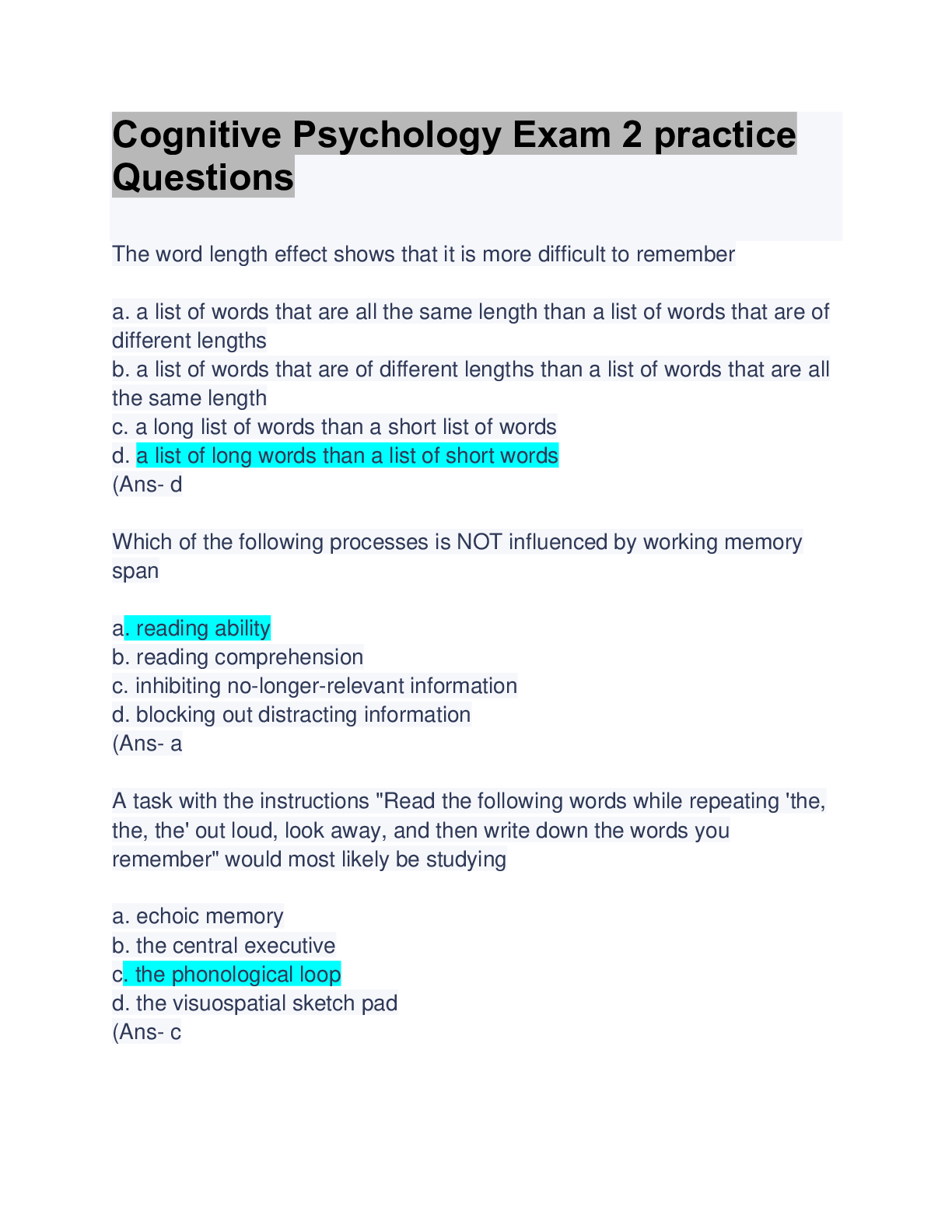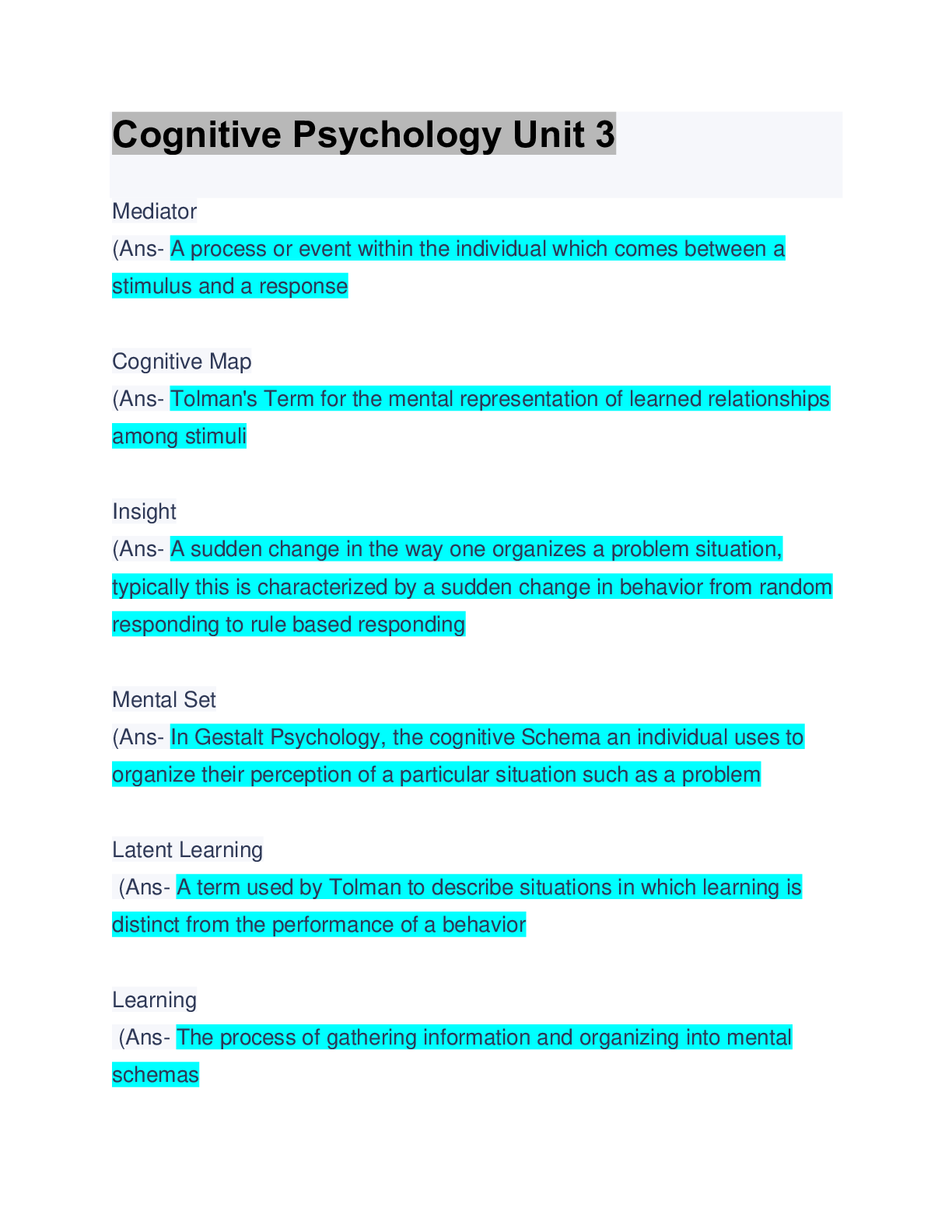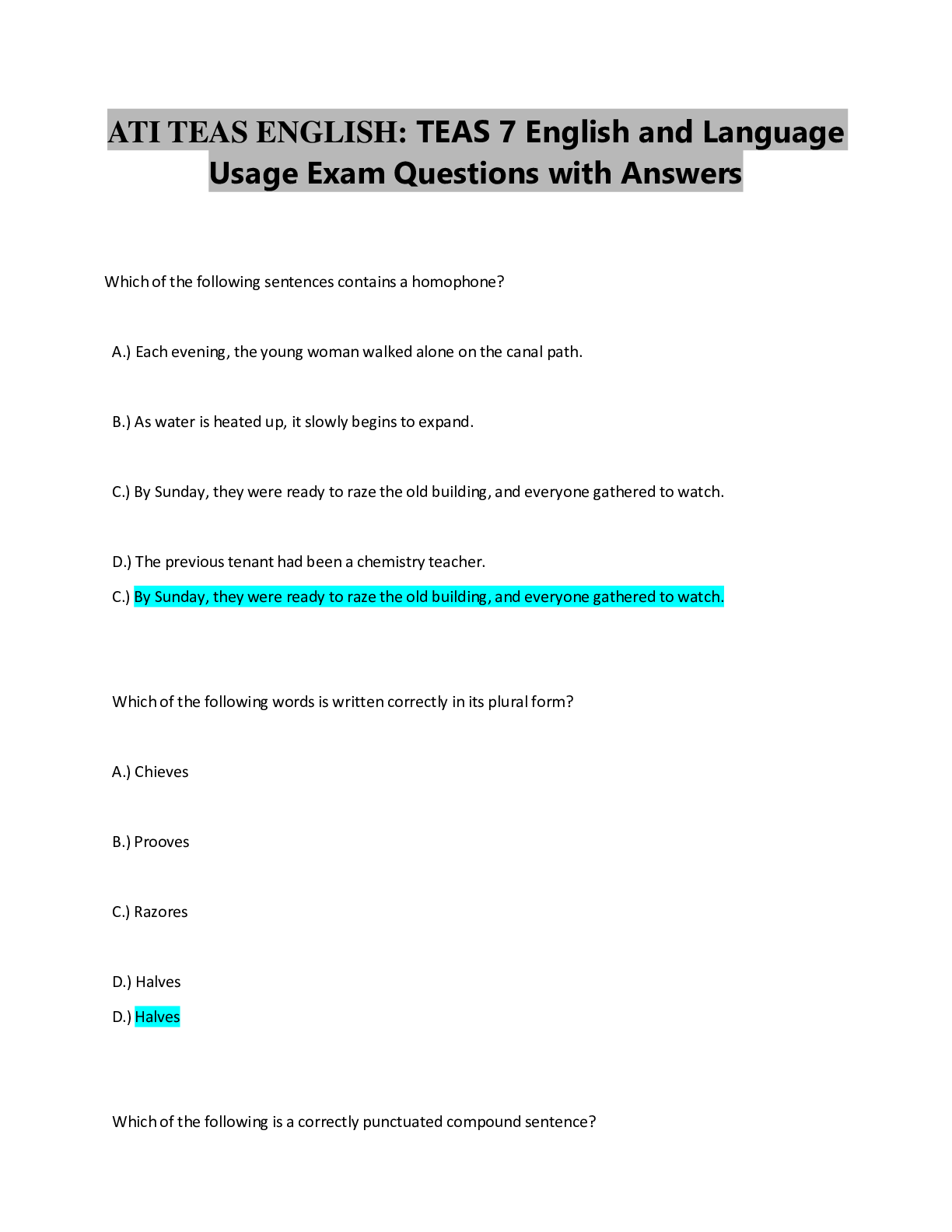Health Care > EXAM > HESI A2 Critical Thinking Exam Test Bank/Questions & Answers/ Complete Solution (All)
HESI A2 Critical Thinking Exam Test Bank/Questions & Answers/ Complete Solution
Document Content and Description Below
1. The nurse is working in the emergency department (ED) of a children's medical center. Which client should the nurse assess first? 1. The 1-month-old infant who has developed colic and is crying. ... 2. The 2-year-old toddler who was bitten by another child at the day-care center. 3. The 6-year-old school-age child who was hit by a car while riding a bicycle. 4. The 14-year-old adolescent whose mother suspects her child is sexually active. (ANS- Rationale Correct – 3-The child hit by a car should be assessed first because he or she may have life- threatening injuries that must be assessed and treated promptly. 1. In an interview, the nurse may find it necessary to take notes to aid his or her memory later. Which statement is true regarding note-taking? A) Note-taking may impede the nurse's observation of the patient's nonverbal behaviors. B) Note-taking allows the patient to continue at his or her own pace as the nurse records what is said. C) Note-taking allows the nurse to shift attention away from the patient, resulting in an increased comfort level. D) Note-taking allows the nurse to break eye contact with the patient, which may increase his or her level of comfort. (ANS- A) Note-taking may impede the nurse's observation of the patient's nonverbal behaviors. Page: 31 Some use of history forms and note-taking may be unavoidable. But be aware that note-taking during the interview has disadvantages. It breaks eye contact too often, and it shifts attention away from the patient, which diminishes his or her sense of importance. It also may interrupt the patient's narrative flow, and it impedes the observation of the patient's nonverbal behavior. 2. The 8-year-old client diagnosed with a vaso-occlusive sickle cell crisis is complaining of a severe headache. Which intervention should the nurse implement first? 1. Administer 6 L of oxygen via nasal cannula. 2. Assess the client's neurological status. 3. Administer a narcotic analgesic by intravenous push (IVP). 4. Increase the client's intravenous (IV) rate. (ANS- Correct - 2- Rationale ; Because the client is complaining of a headache, the nurse should first rule out cerebrovascular accident (CVA) by assess- ing the client's neurological status and then determine whether it is a headache that can be treated with medication. 2. During an interview, the nurse states, "You mentioned shortness of breath. Tell me more about that." Which verbal skill is used with this statement? A) Reflection B) Facilitation C) Direct question D) Open-ended question (ANS- D) Open-ended question Page: 32 The open-ended question asks for narrative information. It states the topic to be discussed but only in general terms. The nurse should use it to begin the interview, to introduce a new section of questions, and whenever the person introduces a new topic. 3. The 6-year-old client who has undergone abdominal surgery is attempting to make a pinwheel spin by blowing on it with the nurse's assistance. The child starts crying because the pinwheel won't spin. Which action should the nurse implement first? 1. Praise the child for the attempt to make the pinwheel spin. 2. Notify the respiratory therapist to implement incentive spirometry. 3. Encourage the child to turn from side to side and cough. 4. Demonstrate how to make the pinwheel spin by blowing on it. (ANS- Correct -1. Rationale ; The nurse should always praise the child for attempts at cooperation even if the child did not accomplish what the nurse asked. 3. A nurse is taking complete health histories on all of the patients attending a wellness workshop. On the history form, one of the written questions asks, "You don't smoke, drink, or take drugs, do you?" This question is an example of: A) talking too much. B) using confrontation. C) using biased or leading questions. D) using blunt language to deal with distasteful topics. (ANS- C) using biased or leading questions. Page: 36 This is an example of using leading or biased questions. Asking, "You don't smoke, do you?" implies that one answer is "better" than another. If the person wants to please someone, he or she is either forced to answer in a way corresponding to their implied values or is made to feel guilty when admitting the other answer. 4. The nurse is caring for clients on the pediatric medical unit. Which client should the nurse assess first? 1. The child diagnosed with type 1 diabetes who has a blood glucose level of 180 mg/dL. 2. The child diagnosed with pneumonia who is coughing and has a temperature of 100°F. 3. The child diagnosed with gastroenteritis who has a potassium (K+) level of 3.9 mEq/L. 4. The child diagnosed with cystic fibrosis who has a pulse oximeter reading of 90%.(ANS Correct - 4. - Rationale ; A pulse oximeter reading of less than 93% is significant and indicates hypoxia, which is life threatening; therefore, this child should be assessed first. [Show More]
Last updated: 3 years ago
Preview 1 out of 129 pages

Buy this document to get the full access instantly
Instant Download Access after purchase
Buy NowInstant download
We Accept:

Reviews( 0 )
$12.00
Can't find what you want? Try our AI powered Search
Document information
Connected school, study & course
About the document
Uploaded On
Aug 21, 2022
Number of pages
129
Written in
Additional information
This document has been written for:
Uploaded
Aug 21, 2022
Downloads
0
Views
114

















.png)
.png)







